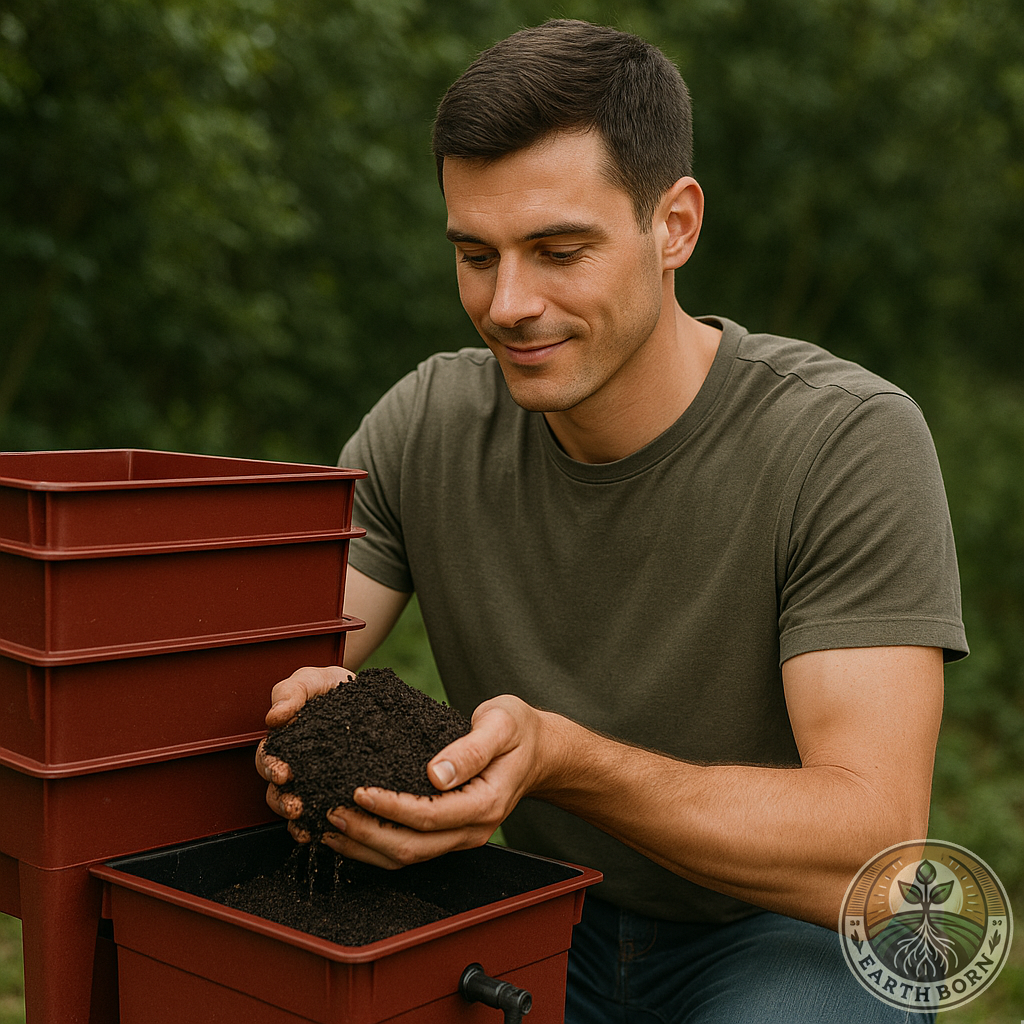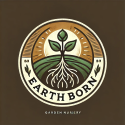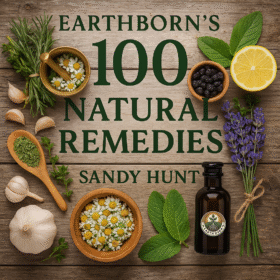
Earthworms are the quiet heroes beneath our feet, working tirelessly to improve soil health, plant growth, and overall garden vitality. Whether you’re an organic gardener, a homesteader, or simply curious about sustainable soil practices, understanding earthworms is key to building a thriving ecosystem.
🔍 How to Identify Earthworms
Earthworms are long, cylindrical, segmented creatures ranging in color from pink to reddish-brown. You’ll often spot them after rain or while digging in moist soil. Here are key features to help you identify them:
- Length: Typically 5–15 cm (2–6 inches), though some species grow longer.
- Segments: Their bodies are divided into rings or segments, each with tiny bristles called setae to help them move.
- Clitellum: A thick, smooth band near the head—this is a reproductive organ.
- No limbs or eyes: But they can sense light and vibrations.
Common species include:
- Lumbricus terrestris (Nightcrawler)
- Eisenia fetida (Red Wiggler – great for composting)
🌱 Why Earthworms Are Beneficial
Earthworms are a cornerstone of healthy soil ecosystems. Here’s why they’re so valuable:
1. Soil Aeration
As they tunnel, earthworms create airways in the soil, which improves oxygen flow to roots and microorganisms.
2. Nutrient Cycling
Their digestion transforms organic matter into nutrient-rich castings—an all-natural fertilizer packed with nitrogen, phosphorus, potassium, and beneficial microbes.
3. Water Retention
Their tunnels improve soil structure, helping water penetrate deeply and reducing runoff.
4. Plant Growth
Studies show earthworm-rich soil boosts seed germination, root development, and crop yields.
🌿 How to Farm Earthworms (Vermiculture)
Raising worms—also called vermiculture—is an eco-friendly way to recycle kitchen waste and create high-quality compost. Here’s how to get started:
✅ What You Need
- Worm bin: A breathable container with drainage. Can be plastic, wood, or a stackable system.
- Bedding: Shredded newspaper, coconut coir, or aged compost.
- Worms: Eisenia fetida (Red Wigglers) are best for farming.
- Food scraps: Vegetable peels, coffee grounds, crushed eggshells. Avoid meat, dairy, and oily foods.
📦 Setup Guide
- Prepare Bedding: Moisten it like a wrung-out sponge.
- Add Worms: Gently place them on top—they’ll burrow down on their own.
- Feed Weekly: Bury food scraps in different areas.
- Harvest Castings: After 2–3 months, separate worms from castings using light or mesh screens.
🛑 Tips & Warnings
- Avoid citrus: Too acidic for worms.
- Keep it dark: Worms dislike light.
- Maintain moisture: Not soggy, just damp.
- Ideal temp: Between 15–25°C (59–77°F)
🧾 How to Identify Worm Castings
Worm castings are the nutrient-rich waste (also called vermicast) that earthworms excrete after digesting organic material. They look quite different from regular soil or decomposing food scraps.
Here’s how to tell if what you’re seeing in your worm bin (or garden) are worm castings:
🔍 Visual Characteristics
- Color: Dark brown or black
- Texture: Fine, crumbly, and granular—like coffee grounds
- Shape: Tiny, curled or pellet-like clusters (they may look like mini soil nuggets)
- No Smell: Castings have a clean, earthy smell—never sour or rotting
💡 Tips to Confirm
- Look where the worms are most active – Castings accumulate near their food or in bedding areas.
- Sift through the material – Castings are uniform in texture, unlike decomposed bedding which looks fibrous.
- Do the squeeze test – Take a small handful and squeeze. It should hold its shape like moist cake crumbs, not drip or stick together like mud.
🧴 Optional: Harvesting Pure Castings
To collect mostly castings:
- Push the worm bin contents to one side.
- Add fresh bedding and food to the other side.
- Wait 1–2 weeks for worms to migrate.
- Harvest the darker, crumbly castings from the now-empty side.
💧 Worm Tea – Liquid Gold for Plants
Worm tea is a powerful liquid fertilizer made by steeping worm castings in water. It delivers nutrients and beneficial microbes directly to your plants’ roots and leaves.
🧪 How to Make Worm Tea
- Add 1 cup of worm castings to a 5-litre bucket of dechlorinated water.
- Stir and let it steep for 12–24 hours (optional: aerate using a fish tank bubbler).
- Strain before use to remove solids.
🌿 How to Use It
- Soil drench: Pour around the base of plants to boost root health.
- Foliar spray: Mist on leaves to prevent disease and feed plants directly.
- Seed soak: Soak seeds before planting to encourage strong germination.
🛡️ Benefits
- Promotes faster growth and flowering
- Protects against pests and diseases
- Rebuilds soil microbiology and improves drought resistance
Use within 24 hours for best results.
🚫 Leachate vs Worm Tea – Don’t Confuse Them!
If your worm farm has a tap at the bottom, it’s for draining leachate—liquid that drips from decomposing food and moisture in the bin. Many people mistake it for worm tea, but they are very different.
🧴 What is Leachate?
Leachate is the dark liquid that collects at the base of your worm bin. It’s not brewed, not oxygenated, and may contain harmful pathogens, especially if the worm bin is too wet or not well-managed.
Leachate should NOT be used on edible plants without caution. It’s best diluted heavily or composted further.
⚖️ Worm Tea vs Leachate Summary
| Feature | Worm Tea | Leachate |
|---|---|---|
| Made with | Worm castings + water (brewed) | Moisture from food waste draining through |
| Oxygenated? | ✅ Yes (especially with bubbling) | ❌ No |
| Microbial content | Beneficial, aerobic microbes | Possibly harmful, anaerobic bacteria |
| Safe for plants? | ✅ Yes | ⚠️ Use with extreme caution (dilute if at all) |
| How it’s used | Brewed and used fresh | Often discarded or added to compost |
👉 Tip: Regularly open the tap to avoid excess moisture in your worm bin—but don’t confuse this runoff with the powerful, brewed worm tea!
🌍 Final Thoughts
Earthworms are more than garden dwellers—they’re partners in sustainable gardening and soil regeneration. By encouraging them in your garden, or farming them for castings and tea, you’re investing in long-term soil health, plant productivity, and eco-friendly living.
Have you started your own worm farm? We would love to see the photos!


 **Meet Sprout!** Sprout is your friendly gardening companion at Earthborn, always ready with helpful advice on plant care, medicinal herbs, and natural gardening solutions. From seedling to harvest, Sprout provides expert guidance to nurture your garden and your well-being—making gardening easy, fun, and naturally rewarding.
**Meet Sprout!** Sprout is your friendly gardening companion at Earthborn, always ready with helpful advice on plant care, medicinal herbs, and natural gardening solutions. From seedling to harvest, Sprout provides expert guidance to nurture your garden and your well-being—making gardening easy, fun, and naturally rewarding.
